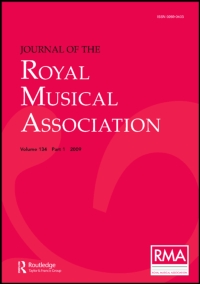Article contents
The Toccatas of Bach
Published online by Cambridge University Press: 01 January 2020
Extract
There are no fewer than twelve complete works of Sebastian Bach to which the name Toccata is applied, and in nearly all cases the title seems to have come from the composer himself. It is always worth while to trace, if we can, the reasons which led a great man to choose one name rather than another for his creations; and in the case of Bach, I think we are justified in supposing that the names he gave were not purely arbitrary, but were chosen for some good reason. Certain modern composers, notably Brahms, have shown a strange indifference to the effect wrought by a well-chosen name for their music. His later works for pianoforte, often grouped under the heading of “Fantasias,” are divided into “Intermezzi” and “‘Capricci” according to whether they are slow movements or fast. But Bach, with his methodical habits, never showed that kind of almost perverse nonchalance in regard to the names his works were to bear. Remember the “Partitas,” and how each of the six introductory movements had a different designation from all the rest. As a matter of fact, there is not much indication of any inner variety of structure among the six, for all are preludial in general character, and it is evidently only a whim of the composer to give the six different titles. One of these, the sixth by the way, is styled “Toccata,” but has none of the distinguishing marks which, I hope to persuade you, Bach had in his mind when he used the title for independent compositions. Mr. Albert Schweitzer in his exceedingly valuable book on Bach (I am speaking of the recent work in two volumes, translated from the French by Mr. Ernest Newman) says that these Toccatas might just as well have been called Sonatas, or by any other name. Here I cannot agree with him, and the main object of my remarks on the present occasion.is to examine into the structure and style of the pieces, and see if we cannot discern some characteristic common to them all, and not shared by any other compositions of Bach.
- Type
- Research Article
- Information
- Copyright
- Copyright © Royal Musical Association, 1912
- 3
- Cited by


